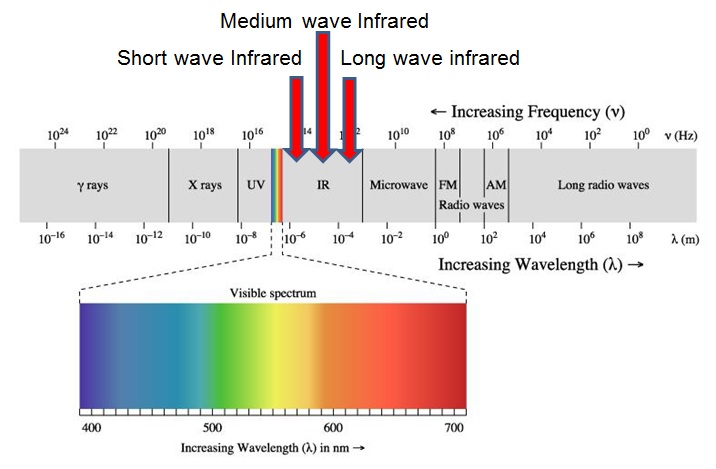Principle of infrared heating

Have you ever asked yourself why you don’t freeze on a sunny winter’s day in sub-zero temperatures? This is actually the principle of infrared warmth at work. When infrared warmth hits our skin, it instantly releases a pleasant sensation of heat, and it is therefore also called “radiant warmth”. Infrared heating is based on this principle of direct warmth and provides particularly efficient heat, saving on energy costs and reducing the generation of dust and allergens.
Infrared heaters use electrical energy to generate an infrared wavelength which is emitted from the surface of the heater.
The infrared waves travel inertly through air until they come into contact with solid objects such as furniture, ceilings or even human beings where they are absorbed and transformed into comfortable warmth.
The heat energy generated in this way is then emitted by the objects and the occupants into the room. This is the decisive difference between infrared heating where occupants are warmed directly and the heat generated by traditional convection heating where occupants are warmed through contact with warm air.
Infrared vs convection heating

Convection heating only warms the ambient air in the room. As the less dense warm air rises, the ceiling of the room receives most of the warmth – wasting valuable energy. Floors and corners receive very little warmth and only as the hot air loses energy and cools does it sink towards the floor where the occupants finally feel the benefit. Occupants often still feel cold drafts (caused by the convection currents sucking in cool air under doors for example) even though the heating is turned up.
The radiant warmth of an infrared heating system, on the other hand, provides a comfortable, evenly distributed temperature throughout the entire room.
With their comfort diagram, Bedford and Liese have shown that the comfortable room climate provided by infrared heating allows a drop of around two degrees in the room temperature while maintaining the same level of comfort.
With infrared the ambient temperature can therefore be reduced without any effect on comfort, and every degree lower means reduced heating costs.
Lower heating requirement
Compared to other heating systems, infrared heaters generate the required warmth directly where they are installed. An infrared heating system suffers none of the heat loss associated with water-borne heating systems while transferring the warm heating water from the boiler through the pipes to the radiators. Thanks to this improved use of heat energy, infrared heaters provide a permanent reduction in heating costs.
The direct heat effect from infrared heating means that inhabitants believe that the room temperature is 2-3 degrees warmer than it actually is. As a result, infrared heating requires less heat output than other heating systems, while at the same time also ensuring shorter heating-up times.
Storing energy within the thermal mass of a room is more efficient than heating air as it retains the heat for longer meaning less energy (on-time) is required to maintain the ambient temperature. This offers the consumer not only fuel savings, but also the possibility of more sustainable, intelligent heating. Each temperature degree lower means a reduction in energy consumption of approximately six percent.
Combined with renewable energies
Infrared heating systems have a good synergy with photovoltaic systems. The solar cells provide energy into the infrared heating system which emits infrared waves. The infrared waves energise the molecules within the thermal mass of the building and the resulting energy is gradually released into the rooms as heat.
Importance of quality
Very often price is the deciding factor when purchasing an infrared heating system. But the quality and efficiency of the infrared heating system is much more important than its purchase cost. Efficiency and build-quality has a long-term effect on energy consumption/cost of heating and the overall life expectancy of the heating system. It is the same principle as investing in a quality LED light.
It’s all to do with wavelength…

The word “infrared” (infra, Latin = beyond) makes it quite clear that we are referring to a range of electromagnetic radiation which lies beyond the red end of the visible light spectrum and is therefore free from UV radiation.
Our products from ETHERMA are visionary technical devices designed to make optimum use of the highly efficient infrared radiation as a source of heat. This is why we have the right ingenious warmth solution for every application.
The individual infrared heaters differ in terms of their wavelengths.
Long-wave infrared – indoor applications: LAVA Design infrared heating, flush-mounted wall heating
Medium-wave infrared – warehouses and halls: Ceiling and quartz heaters
Short-wave infrared: – outdoor: SOLAMAGIC short-wave heaters













